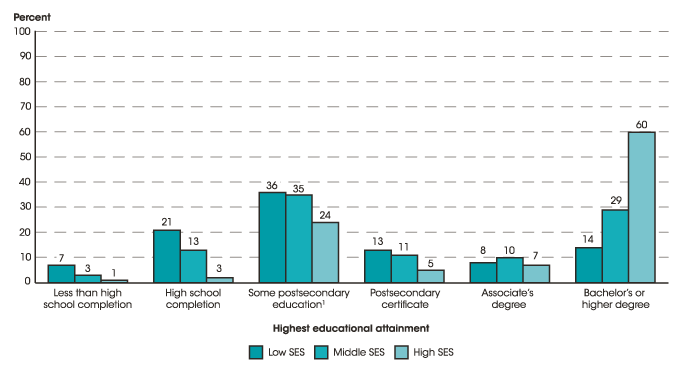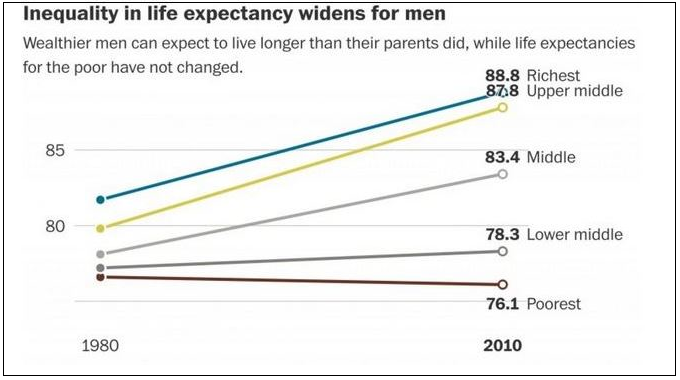Socioeconomic status (SES) is a concept that scholars utilize to study a wide range of attributes defining a specific population, including educational attainment, class, race, gender, occupation, and income level. Analysts can apply this model to understand the privileges, experiences, and opportunities associated with the targeted people in a given community. Many individuals will achieve their goals in life depending on the support systems and resources available in the neighborhood. The existing differences in the socioeconomic statuses of children result in diverse problems in their future lives (Ehrenfreund, 2015). The purpose of this paper is to propose a study aimed at determining whether the presence of socioeconomic differences among children can result in problems in their future life experiences.
Significance of the Study
SES guides policymakers, educationists, and community members to predict numerous outcomes across a person’s lifespan, such as economic goals, mental health, social abilities, interpersonal relationships, and physical status. The intended study seeks to understand how the existence of such SES differences among young members of society result in numerous challenges during their adult life (Musu-Gillette, 2015). The acquired information or findings can become powerful guidelines for influencing policy decisions and empowering all children with diverse SES backgrounds.
Background of the Study
The economic, income and social position of specific members of a given society will dictate their health and physical health outcomes. Individuals living in low SES regions encounter diverse problems that affect their experiences. Some of the common predicaments include poverty, lack of high-quality medical services, lack of appropriate education, and increased levels of crime. The majority of the children in these neighborhoods will record poor
mental and physical health development, lack appropriate resources, and have pitiable lives. They will become disoriented and fail to record meaningful social upward mobilities (Zimmer, Hanson, & Smith, 2016). Areas with high SES index will not experience most of these problems. Most of the established systems and structures to address most of the social and economic problems many people go through tend to be applied inappropriately or discriminatively. Such a malpractice affects the outcomes and experiences of many members of the community.
Problem Statement
The purpose of various social functions in any given nation is to meet the needs of its citizens and make it easier for them to have high-quality lives. Unfortunately, most of such resources have been applied ineffectively depending on the SES index of the targeted region. For instance, Zimmer et al. (2016) believes that regions with wealthy citizens will have a high SES score because they have access to better jobs, educational, and medical services. Those in low SES neighborhoods lack adequate protection, empowerment, or support. Past studies have focused mainly on the nature of these challenges and their potential impacts on young children (Ehrenfreund, 2015). However, very little is understood regarding the implications of such differences on the outcomes of these young people across the lifespan. The completion of this proposed research will deliver high-quality insights that can influence new policies and ideas to overcome such predicaments.
Research Questions
Scientists and scholars use powerful models to complete their studies and present additional evidence that can transform the intended field, behavior, or practice. The use of a research question is an effective strategy for supporting the process and finding a concrete answer. Denzin (2017) defines it as any answerable inquisition into a given issue or concern. The ultimate aim behind the intended study is to provide the most appropriate solution to it.
Research Question 1 (RQ 1):
Are there diverse socioeconomic statuses among children?

Research Question 2 (RQ 2):
Does the presence of differences in the socioeconomic statuses of children result in problems in their future lives?

Literature Review
The purpose of a literature review is to give a detailed analysis of the studies and past findings on a specific subject. Sternheimer (2020) defines it as a comprehensive synopsis or summary of previous work and research on a given topic. The existence of disparities is a major contributor to the differences and experiences of many young children. Those in underserved neighborhoods lack basic resources and find it hard to get high-quality education (Zimmer et al., 2016). Their lifestyles differ significantly from those of the rich members of the society (see Figure 1). They are forced to use illegal drugs at a very tender age. Such citizens usually lack adequate medical support and care.
Such challenges or gaps have been found to affect their careers and economic positions as young adults. For instance, Yang, Gerken, Schorpp, Boen, and Harris (2017) indicate that individuals from low SES backgrounds would lack better jobs or ideas for starting their own businesses. The absence of proper medical support and the challenge of poverty make it hard for them to overcome a number of conditions, such as obesity, diarrhea, or kwashiorkor. They tend to record poor social mobility or fail to achieve their economic goals (see Figure 2). Majority of those who manage to have families do so at a delicate stage or later in life (Hosokawa & Katsura, 2018). These attributes have been observed to affect the social experiences and economic outcomes of many children from low SES. The opposite has been observed to be true in regions whereby members of the society receive timely support and resources.
Assumptions
Several assumptions will be considered for this study in order to overcome the challenges that might disorient the anticipated results. The first one is that all societies will be studied as if they have SES differences and inequalities (Hosokawa & Katsura, 2018). The second assumption is that all children living in low SES will be treated equally without considering the situations of those who manage to get scholars and record significant upward mobility.
Limitations
Several limitations are anticipated that might affect the success and integrity of the intended research. First, the allocated time for completing this research is short. This means that a small number of sources will be consulted to respond to the above research questions. Second, the use of a qualitative study approach might not deliver high-quality findings in comparison with a quantitative model or strategy.
Findings
The completed study will offer useful findings regarding the impact of SES differences and how they might affect children in their future lives. The collected information will guide different policymakers to focus on the best approaches to empower the needy in the society and equip them with the relevant resources. The ultimate aim should be to minimize such lifespan differences and improve the level of personal and national economic growth. These attributes explain why the proposed study is appropriate and capable of transforming the situations and experiences of many citizens in this country.
References
- Denzin, N. K. (2017). The research Act: A theoretical introduction to sociological methods. London, UK: Transaction Publishers.
- Ehrenfreund, M. (2015). How income affects life expectancy. World Economic Forum. Web.
- Hosokawa, R., & Katsura, T. (2018). Effect of socioeconomic status on behavioral problems from preschool to early elementary school – A Japanese longitudinal study. PLoS ONE, 13(5), e0197961. doi:10.1371/journal.pone.0197961
- Musu-Gillette, L. (2015). Educational attainment differences by students’ socioeconomic status. NCES Blog. Web.
- Sternheimer, K. (2020). Everyday sociology reader. New York, NY: W. W. Norton.
- Yang, Y. C., Gerken, K., Schorpp, K., Boen, C., & Harris, K. M. (2017). Early life socioeconomic status and adult physiological functioning: A life course examination of biosocial mechanisms. Biodemography and Social Biology, 63(2), 87-103. doi:10.1080/19485565.2017.1279536
- Zimmer, Z., Hanson, H. A., & Smith, K. R. (2016). Childhood socioeconomic status, adult socioeconomic status, and old-age health trajectories: Connecting early, middle, and late life. Demographic Research, 34(10), 285-320. doi:10.4054/DemRes.2016.34.10